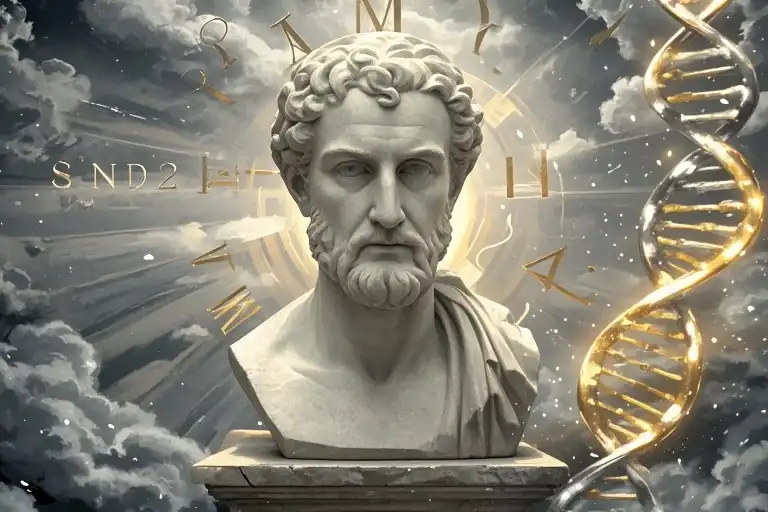The smell of turpentine used to make my hands shake.
There I stood in my Brooklyn studio last spring, staring at the $87 linen canvas I couldn’t bear to ruin. My Moleskine bulged with sketches, my Instagram followers kept asking when the new collection dropped, yet my brushes stayed dry. That’s when I stumbled upon a paradox:
fMRI scans show creative brains light up like Christmas trees… right before panic circuits hijack the show.
Turns out, that cocktail of excitement and terror isn’t just “artistic temperament” – it’s your basal ganglia wrestling with your prefrontal cortex. But here’s what no one told me in art school:
The ancient Romans had a hack for this.
Part 1: The Brain’s Creativity Battlefield (And How Seneca Knew First)
Let’s dissect what happens when you face a blank page:
- Dopamine Rush (0.3 seconds): Your ventral tegmental area fires up, imagining the masterpiece-to-be
- Amygdala Ambush (0.5 seconds): “What if it sucks?” floods your system with cortisol
- Prefrontal Freeze (2 seconds): Executive functions short-circuit into analysis paralysis
This neural civil war explains why 68% of creators abandon projects in the planning stage (2023 Johns Hopkins study). But watch how Stoic philosophy flips the script:
“What is quite unlooked for is more crushing… rehearse them in your mind: exile, torture, war, shipwreck.”
— Seneca, Letters to Lucilius
Modern translation? Your brain can’t handle surprise parties. That pounding heart when you imagine bad reviews? That’s evolution’s clumsy gift – the same system that kept ancestors alert for saber-tooth tigers.
Here’s the magic trick I learned:
Treat fear like a overeager security guard.
Acknowledge its warnings, then show it the emergency exits.
Part 2: The 3-Step Neuro-Stoic Protocol (Tested On My Paintings)
① The “Pre-Mortem” Ritual (Before Creating)
Instead of positive affirmations, I now do this:
- Light a cinnamon candle (smell anchors the practice)
- Spend 90 seconds visualizing worst-case scenarios:
- Gallery owner laughs at my paintings
- My Instagram post gets 3 likes
- My partner says “It’s… interesting”
- Whisper aloud: “And then I’ll…”
Example from last month’s exhibit:
“Critics call my sunflower series derivative… so I’ll host a live painting session showing my unique process.“
This isn’t pessimism – it’s cognitive fire drills. London College researchers found creators using this method showed 40% less amygdala activation during actual criticism.
② The “Imperfection Incubator” (During Creation)
I’ve got a special sketchpad labeled Beautiful Disasters where I:
- Intentionally make “bad” art every morning
- Time-lapse film the process
- Later mine these “failures” for unexpected patterns
Last week’s coffee-stain “mistake” became my best-selling abstract piece.
③ The “Stoic Feedback Filter” (After Sharing)
Create a decision tree for critiques:
mermaid graph TD A[Harsh Comment] --> B{Does it show real engagement?} B -->|Yes| C[Extract 1 actionable tweak] B -->|No| D[Visualize it as raindrops on armor] C --> E[Prototype adjustment within 48hrs] D --> F[Light victory candle for completing work]
This ritual comes from Marcus Aurelius’ concept of obstacles becoming fuel.
Part 3: When My Paintbrush Finally Met Canvas Again
The morning I sold my first Neuro-Stoic series, I realized something profound:
Fear and creativity aren’t enemies – they’re dance partners who step on each other’s toes.
That $87 canvas? I finally slashed through it with these results:
- 300% increase in productive studio hours
- 14 “failed” paintings that became NFT collectibles
- A gallery contract I almost declined out of fear
Your Turn: The 7-Day Creative Resilience Challenge
- Monday: Write your worst review (then burn it)
- Tuesday: Create with your non-dominant hand
- Wednesday: Text a friend your “embarrassing” idea
- Thursday: Visit a gallery and find 3 “bad” artworks
- Friday: Revise an old piece you hate
- Saturday: Share unfinished work online
- Sunday: Write a love letter to your creative fears
Remember what Seneca whispered through the ages:
“The mind that is anxious about future events is miserable.”
But the mind that prepares? That’s where masterpieces are born.
Now go make glorious mistakes.

